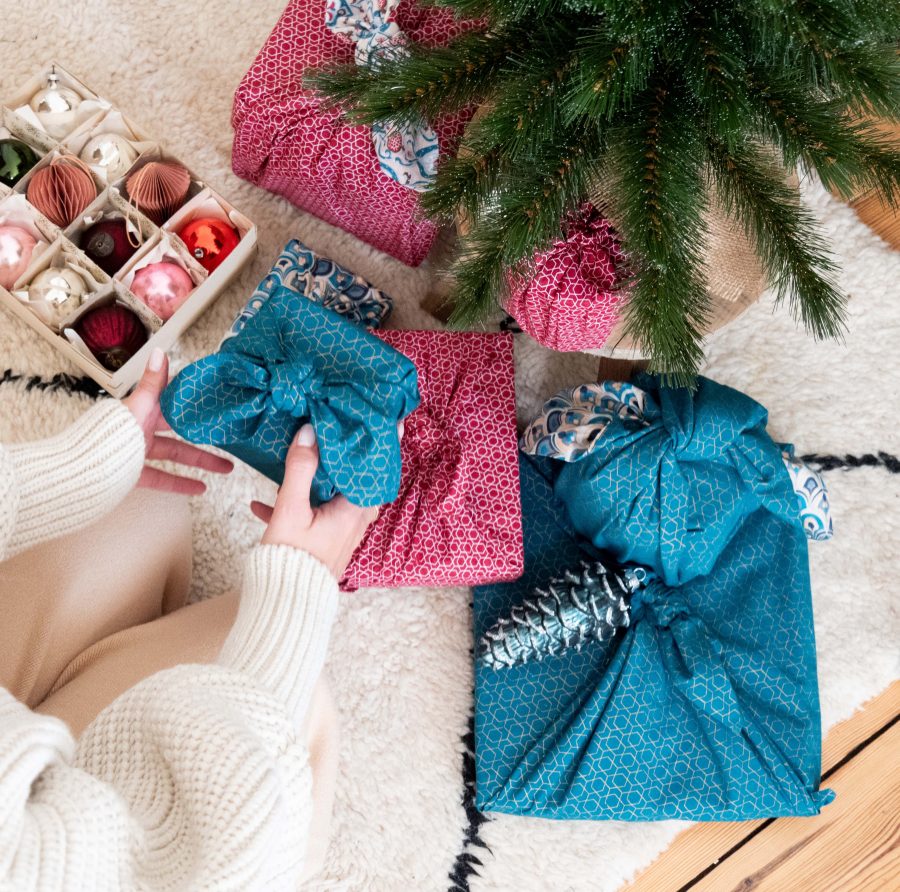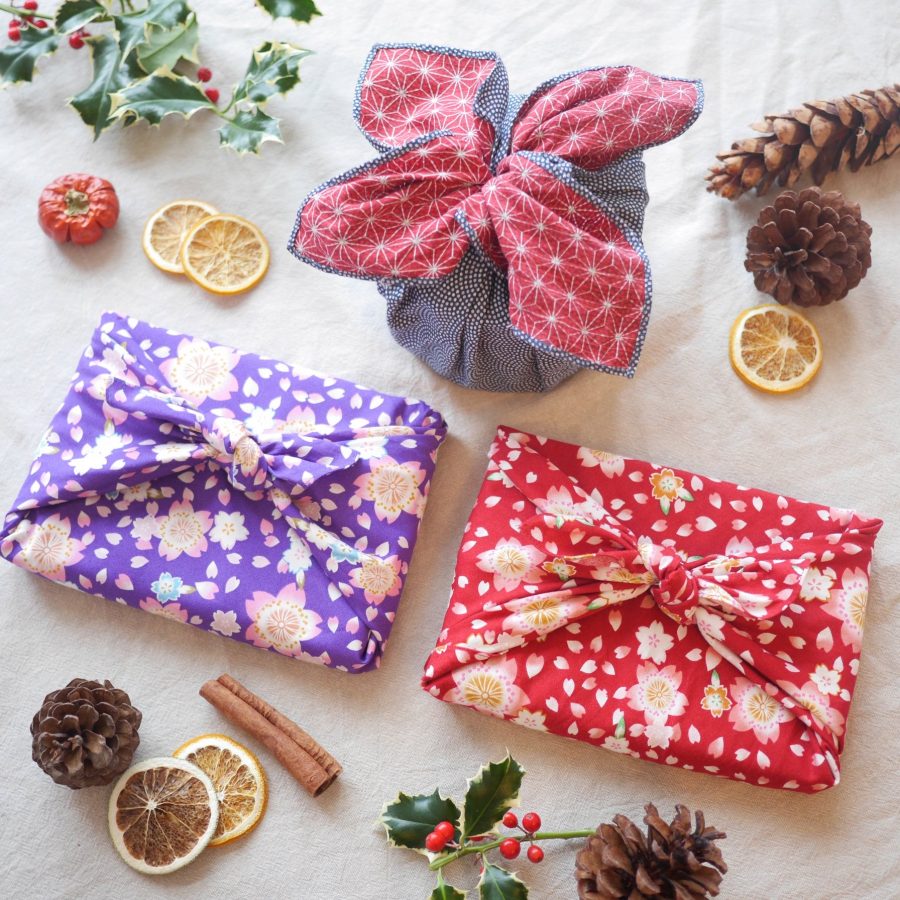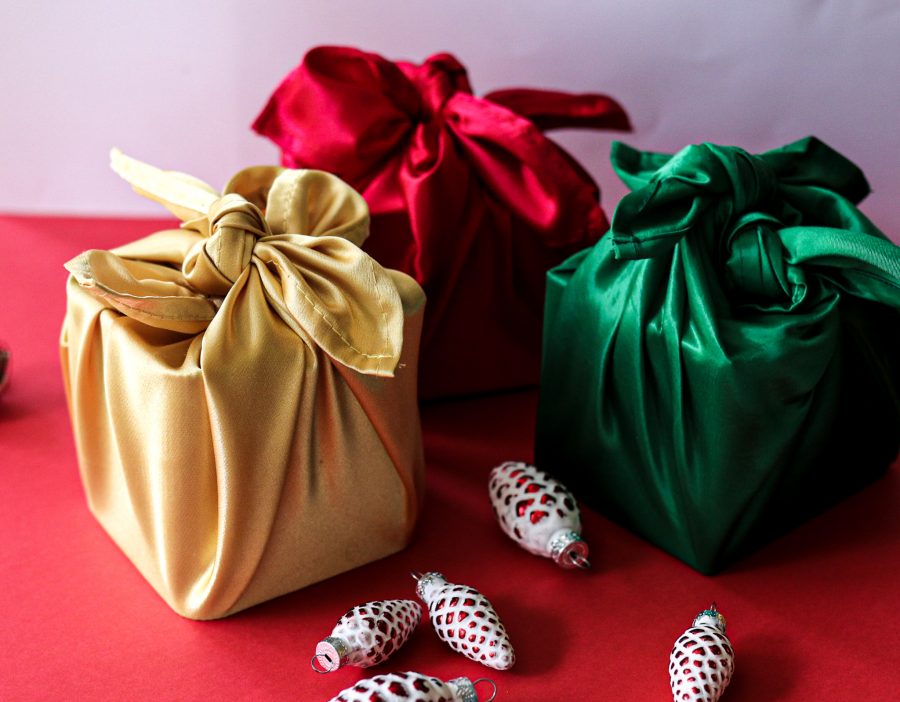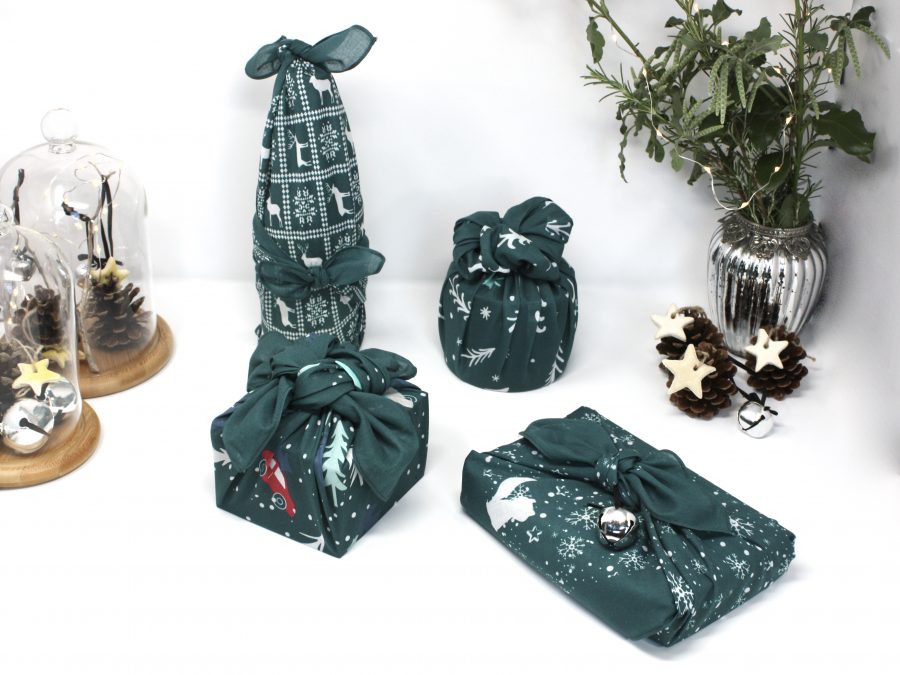When you tie your first furoshiki, and admire the neat folds of fabric and perky little bow, one question comes to mind: why didn’t you do this sooner? Why did you battle every year with wrapping paper and sellotape, only for the finished result – whether stunning or slapdash – to be ripped to shreds and tossed in the bin?
For many of us, Christmas Day wouldn’t be complete without a heap of scrunched-up paper gaining height in the living room corner – but what if there was an easier, more stylish and sustainable way to decorate festive gifts? Enter furoshiki, and the art of fabric-wrapping: your new favourite Christmas tradition.

In Japan, furoshiki cloths have long been used to wrap items for storage, transport or gifting, in an efficient yet elegant way. Different knots and folding techniques are used for various shapes – a practice that some say dates back to around 700BC. Today, it is still popular all over the country, but is fast becoming a global trend too.
“It was always part of my life growing up in Japan,” says Miki Roberts, founder of online furoshiki shop Hanabee. “I used fabric to encase and carry my bento box to school, protect my yukata (summer kimono) while storing them, as well as wrapping gifts.” When Miki moved to the UK, she stopped using furoshiki, until she received a fabric-wrapped present several years later: “I rediscovered how versatile it is, and fell in love with it all over again.”

Fabric-wrapping is much simpler than it often looks (see below for our step-by-step guide), and any lightweight cloth will suffice – but for the finest finish and the easiest knots, purpose-made furoshiki are best. And there are myriad specialist suppliers online: for example, Fabrap specialises in double-sided patterned cotton, while Hanabee selects reversible decorative designs from Japan. At Wrapuccino, you can buy hand-sewn squares of silk, satin, and even fabric made from recycled plastic, with a percentage of profits donated to UK conservation charity Ocean Generation.

“A furoshiki is much more pliable than paper, so it folds around a gift’s bumps and corners without tearing,” says Beverley Boss, founder of online furoshiki shop KindlyYarn, whose colour-coordinated collections are designed in Hertfordshire. “In the time it takes to measure and cut wrapping paper, and find the end of the sticky tape, you can have two or three presents completely finished.”

Traditionally, furoshiki cloth is returned to the gift-giver, but you may wish to consider it part of the present – so that the recipient can enjoy it too. “When gifting your family, I recommend using it like a Christmas stocking,” says Miki. “Wrap gifts with your furoshiki every birthday, anniversary and Christmas, reusing them throughout the year. It’s quick, beautiful and sustainable. What’s not to love?”
How to tie a basic furoshiki wrap
This simple technique can be used for wrapping a book, photo frame or other small item. A 55x55cm furoshiki is perfect.
1. Lay out your furoshiki patterned-side down, with one corner pointing at you. Place the gift in the centre. Unlike when you’re wrapping with paper, the edges of the gift should not be parallel with the edges of the fabric: there should be triangles of fabric visible on all sides of the gift.
2. Fold the top flap of fabric over the gift, and tuck it underneath the bottom edge. Then, repeat with the bottom flap, folding it upwards over the gift. Don’t worry about securing the fabric corner – the next step will keep it in place.
3. Gather the left and right flaps of fabric, as if they were paper wrapping, and join them over the top of the gift. Take care to ensure the fabric is tight and smooth. Tie the two ends in a double knot or bow in the centre, and neaten any creases.





So interesting, loved this article
Awesome!